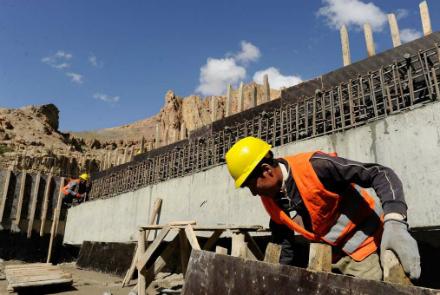The US government spent more than $2.4 billion on capital assets that were unused or abandoned, were not used for their intended purposes, had deteriorated, or were destroyed, a US watchdog says in a new report released on Feb. 24.
The US Special Inspector General for Afghanistan Reconstruction (SIGAR) has found in the report that of the nearly $7.8 billion in capital assets reviewed in its prior reports, SIGAR identified about $2.4 billion in assets that were unused or abandoned, had not been used for their intended purposes, had deteriorated, or were destroyed.
By contrast, SIGAR found that more than $1.2 billion out of the $7.8 billion in assets were being used as intended, and only $343.2 million out of the $7.8 billion in assets were maintained in good condition.
However, in its previous reports, SIGAR could not always determine whether assets were used as intended or maintained in good condition because in some cases, SIGAR published the reports before construction or procurement of the assets was completed, or because the reports did not discuss use and maintenance.
SIGAR selected a judgmental, stratified sample of 60 assets, costing $792.1 million, from a list of all US-funded capital assets evaluated in its prior reports for follow-up inspections to collect more current data about the assets’ use and condition.
SIGAR found that 37 of the 60 capital assets inspected were being used as intended, including several that were previously unused or abandoned.
However, SIGAR also found that ten were used but not for their intended purposes, nine were unused or abandoned, three were still under construction and not yet ready for use, and the status of one is classified.
Additionally, 50 of the capital assets had either deteriorated or continued to deteriorate after they were last assessed, the report says.
Although the follow-up inspections found that most assets were being used as intended, SIGAR found that $723.8 million, or 91 percent of the total costs of all 60 assets in the sample, went toward assets that were unused or abandoned, were not used as intended, had deteriorated, were destroyed, or had some combination of the above.
SIGAR also found several of the same defects among the assets inspected, including major structural damage.
This damage included:
37 sites with structural damage to exterior walls, siding, and roofs;
34 sites with structural damage to interior walls, ceilings, and floors;
37 sites with at least one door or window that was damaged or missing hardware;
33 sites with broken or missing lights and other electrical fixtures, or improvised wiring for broken electrical fixtures that created a risk of electrocution or electrical fire;
28 sites with broken or missing appliances and heavy machinery;
23 sites with water damage, mildew, or mold; and
21 sites with broken or leaky pipes, damaged bathroom fixtures, or blocked drains.
The report says that although the reasons for the use and condition of each capital asset were unique, SIGAR identified several problems that led to the assets not being used as intended, deteriorating, or being destroyed.
Based on prior reports and the 60 follow-up inspections, SIGAR identified the five most common reasons why capital assets were generally not used.
The most common reason that funds spent on capital assets were wasted was that the Afghan beneficiaries lacked the resources or capabilities they needed to operate and maintain these assets, the report says.
According to the report, this suggests that US agencies have generally not built or procured capital assets that the Afghan government and private sector can afford to sustain on their own.


